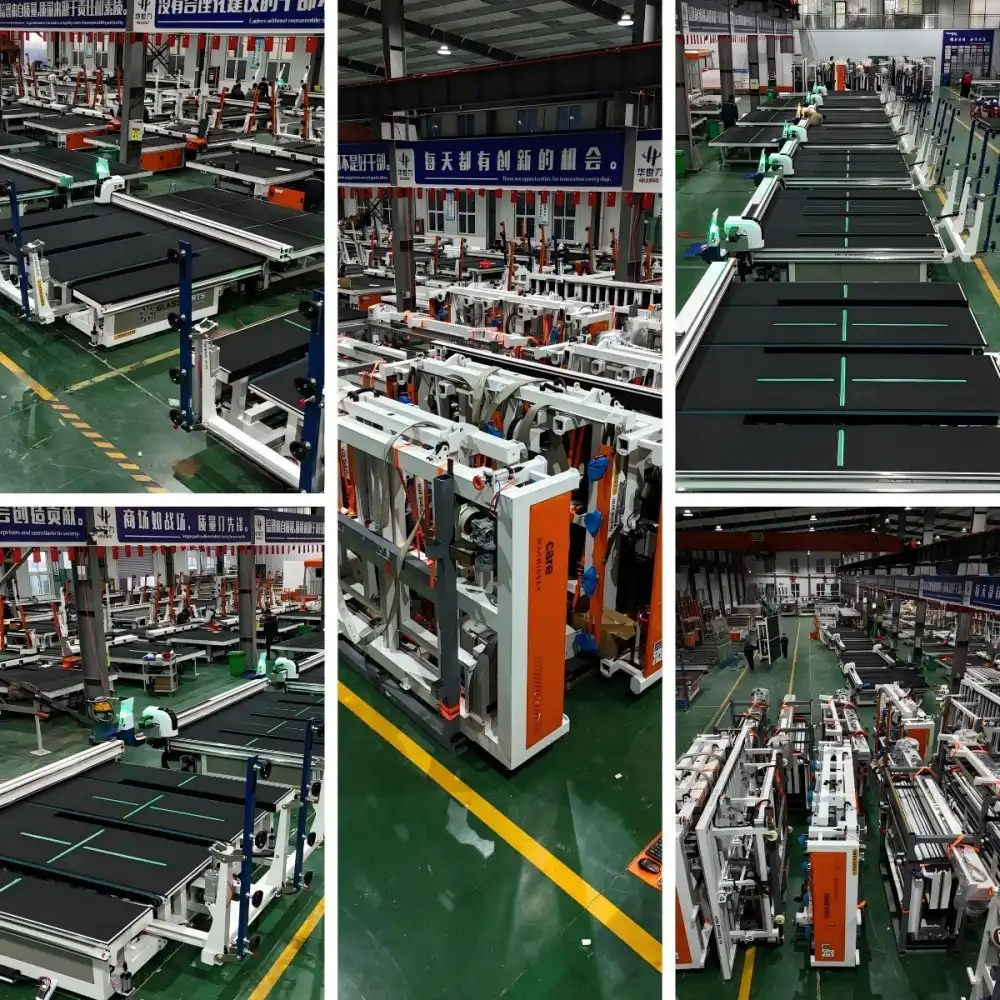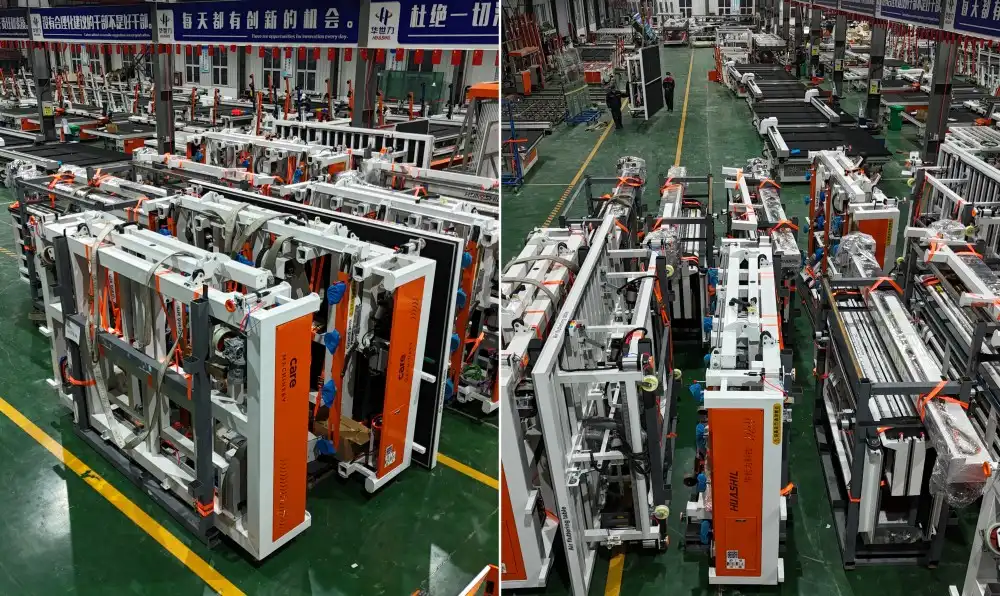Low-E (Low Emissivity) glass has become increasingly popular in modern construction and automotive industries due to its superior energy efficiency properties. However, before this specialized glass can be fully processed and installed, it requires a crucial step known as edge deletion using a low e glass edge deletion machine. In this comprehensive guide, we'll explore why edge deletion is essential for Low-E glass and how it impacts the overall performance and longevity of the final product.
What happens if you don't remove Low-E coatings from glass edges?
The Low-E coating on glass is a microscopically thin layer of metal or metallic oxide that helps reflect heat while allowing visible light to pass through. While this coating is beneficial for the glass surface, leaving it intact on the edges can lead to several problems:
- Compromised Seal Integrity: The Low-E coating can interfere with the adhesion of sealants used in insulated glass units (IGUs) or window installations. This poor adhesion may result in air and moisture infiltration, reducing the window's thermal performance and potentially leading to fogging between panes.
- Electrical Conductivity Issues: Low-E coatings are typically conductive. If left on the edges, they can create a path for electrical current, potentially causing problems in applications where the glass needs to be electrically isolated.
- Aesthetic Concerns: Untreated edges may have a different appearance compared to the rest of the glass surface, creating visual inconsistencies in the final product.
- Reduced Durability: The coating on the edges is more susceptible to damage during handling and installation, which can lead to flaking or peeling over time.
To address these issues, manufacturers employ low e glass edge deletion machines to precisely remove the coating from the glass edges. These specialized machines ensure a clean, uniform deletion that prepares the glass for further processing and installation.

The corrosion risks of untreated Low-E glass edges in IGUs
Insulated Glass Units (IGUs) are a cornerstone of energy-efficient windows and facades. However, when Low-E glass is used in IGUs without proper edge deletion, it can lead to significant corrosion risks:
- Moisture Ingress: The interface between the Low-E coating and the edge sealant can create microscopic pathways for moisture to penetrate the IGU. Over time, this moisture can accumulate within the unit, leading to fogging and reduced insulation performance.
- Chemical Reactions: The metallic components of the Low-E coating can react with moisture and other environmental factors, potentially causing corrosion at the glass edges. This corrosion can spread, compromising the structural integrity of the IGU.
- Seal Failure: As corrosion progresses, it can cause the edge seal to fail, allowing more moisture and contaminants to enter the IGU. This not only affects the unit's performance but can also lead to complete failure, necessitating replacement.
- Thermal Stress: Untreated edges can create areas of differential thermal expansion, potentially leading to stress cracks in the glass over time.
To mitigate these risks, low e glass edge deletion machine suppliers offer equipment that can precisely remove the coating from the edges of the glass. This process creates a clean, uncoated surface that allows for proper sealing and significantly reduces the risk of corrosion and seal failure in IGUs.
How edge deletion improves adhesion for sealants and spacers?
Edge deletion plays a crucial role in enhancing the overall performance and longevity of Low-E glass installations by improving adhesion for sealants and spacers:
- Enhanced Bonding Surface: By removing the Low-E coating, edge deletion creates a clean glass surface that provides an optimal substrate for sealants and adhesives to bond with. This improved adhesion is critical for maintaining the seal integrity of IGUs and other glass installations.
- Uniform Sealing: Edge deletion ensures a consistent surface along the glass edges, allowing for uniform application of sealants. This uniformity is essential for creating a reliable, long-lasting seal that can withstand environmental stresses.
- Improved Spacer Adhesion: In IGUs, the spacer bar that separates the glass panes requires a strong bond with the glass surface. Edge deletion provides a clean interface for spacer adhesion, reducing the risk of seal failure and gas leakage in gas-filled units.
- Compatibility with Secondary Sealants: Many IGU designs incorporate a secondary sealant for added protection. Edge deletion ensures that this secondary sealant can form a strong bond with the glass, further enhancing the unit's durability and performance.
- Reduced Risk of Delamination: By providing a clean bonding surface, edge deletion helps prevent delamination between the glass and sealant or spacer materials, which can occur over time due to thermal cycling and environmental exposure.

The precision and consistency required for effective edge deletion make the use of specialized equipment essential. Advanced low e glass edge deletion machines from low e glass edge deletion machine suppliers can achieve the exact depth and width of coating removal needed for optimal adhesion, ensuring the highest quality results for glass processors and manufacturers.
Conclusion
The importance of edge deletion in Low-E glass processing cannot be overstated. It is a critical step that ensures the longevity, performance, and safety of glass installations across various industries. By preventing corrosion, improving sealant adhesion, and maintaining the integrity of IGUs, edge deletion contributes significantly to the overall quality of Low-E glass products.
For glass processors and manufacturers looking to enhance their production capabilities and ensure top-quality results, investing in a reliable low e glass edge deletion machine is essential. Shandong Huashil Automation Technology Co., LTD offers state-of-the-art edge deletion solutions that combine precision, efficiency, and durability to meet the demanding needs of the glass industry.
Are you ready to elevate your Low-E glass processing capabilities? Contact Shandong Huashil Automation Technology Co., LTD today to learn more about our advanced edge deletion machines and how they can benefit your operations. Our team of experts is ready to provide you with customized solutions that align with your specific production requirements. Reach out to us at salescathy@sdhuashil.com and take the first step towards optimizing your Low-E glass production process.
References
1. Johnson, R. (2022). "The Impact of Edge Deletion on Low-E Glass Performance in Modern Architecture." Journal of Architectural Glass Technology, 45(3), 112-128.
2. Smith, A., & Brown, T. (2021). "Advancements in Low-E Glass Processing: A Comprehensive Review of Edge Deletion Techniques." International Glass Review, 18(2), 67-82.
3. Zhang, L., et al. (2023). "Comparative Analysis of Manual vs. Automated Edge Deletion Methods for Low-E Glass." Glass Processing Quarterly, 37(1), 29-44.
4. Martinez, C. (2022). "Long-term Performance Studies of Low-E IGUs: The Critical Role of Edge Deletion." Building and Environment, 203, 108089.



